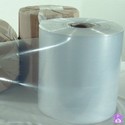Polythenefilm2u.com is a free resourceful website aimed to provide you with everything you need to know about plastic film or polythene film. In today's competitive marketplace, manufacturers of products and packages are under increasing pressure to satisfy varied demands, such as lowering prices, improving performance and enhancing environmental properties. Having said that, the material that a manufacturer chooses to use in its products and packages can affect its ability to remain competitive.
Plastic film allows manufacturers to meet varied marketplace demands by enabling them to do more with less.
We hope to provide technical experts and laypersons with a better understanding of what film is, how it is made, how to express thickness of plastic films and we'd also direct you to our preferred supplier of polythene film for your packaging needs.
So, whether complete beginner of expert we believe you will find our site very useful.
What are plastic films?
Plastic film is a thin sheet of material with a thickness less than 0.25mm/10mils/1000gauge, averaging between 0.7 mils to 1.5 mils. It is (usually plastic and transparent) used as a packaging medium to cover or wrap things. A mil is 0.001 inch.
Plastic film also can be clear or colored, printed or plain, single- or multilayered and combined with other materials such as aluminium and paper.
How it is made?
- Extrusion - hot, melted plastic resin is forced through a circular die, forming a thin tube. Air is introduced, expanding the size of the cooling tube which is then flattened as it passes through converging slats and rollers.
- Extrusion coating - resin is melted and forced through a long, slit-shaped die. The sheet of plastic falls evenly onto a continually moving roll of material, such as paper, cardboard, aluminium foil or fabric. The plastic cools and sets on the material.
- Coextrusion - this involves complex die design and multiple extruders, allowing two or more melt streams to be combined. Increasingly, up to five or seven layers are now being used.
- Calendering - this process follows the principle of squeezing laundry out in an old mangle. Hot plastic is poured and evenly squeezed between rollers.
How to express thickness of plastic films
A plastic film is a web material with a thickness not exceeding 0.25 mm or 0.001 inch. Material over this thickness is considered as sheet material. There are several ways of designating thicknesses. The most common are:
Thickness of polythene film is usually measured using a micrometer
- millimetres (mm) = 0.039 inch
- microns or mu (u) = 0.001 mm or 0.000039 inch
- mil (or thou) = 0.001 inch, 25.4 microns or 100 gauge
- gauge (or gage) = 0.00001 inch, 0.254 micron
| guage | mils | inches | millimeters | micrometers |
| 1 | 0.01 | 0.00001 | 0.000254 | 0.254 |
| 2 | 0.02 | 0.00002 | 0.000508 | 0.508 |
| 5 | 0.05 | 0.00005 | 0.00127 | 1.27 |
| 10 | 0.1 | 0.0001 | 0.00254 | 2.54 |
| 20 | 0.2 | 0.0002 | 0.00508 | 5.08 |
| 50 | 0.5 | 0.0005 | 0.0127 | 12.7 |
| 100 | 1 | 0.001 | 0.0254 | 25.4 |
| 200 | 2 | 0.002 | 0.0508 | 50.8 |
| 500 | 5 | 0.005 | 0.127 | 127 |
| 1000 | 10 | 0.01 | 0.254 | 254 |
To Convert: Gauge to Mils - Multiply By - 0.01
To Convert: Gauge to Inches - Multiply By - 1.0 x 10-5
To Convert: Gauge to Milimitres - Multiply By - 0.254 x 10-3
To Convert: Gauge to Microns - Multiply By - 0.254
